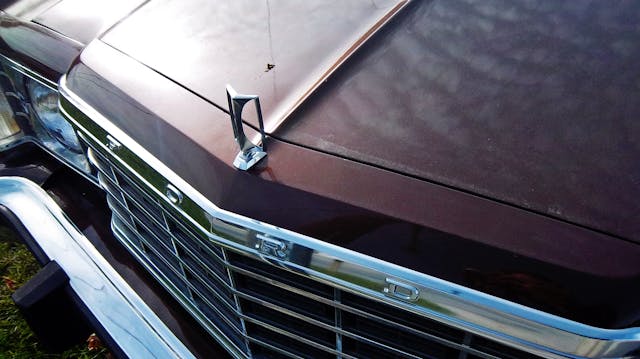1977 Ford Granada Ghia Sedan: Hello Muddah, Hello Faddah…

Okay folks, it is now time to hop into Mr. Peabody’s Wayback machine to the year of 1975, when, for some reason, a lot of new cars were named after Spanish cities. Cadillac debuted the ‘sheer look’ small-for-a-Cadillac Seville, Chrysler showed off their Herb Tarlek-tastic Cordoba, and FoMoCo displayed an extremely fancy Falcon-based luxury compact: The Granada.
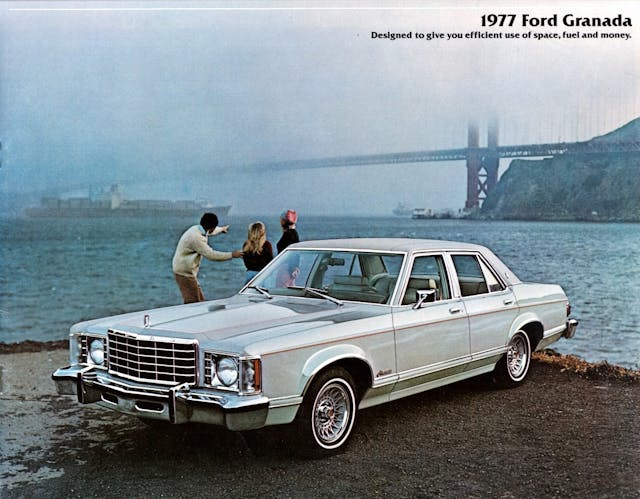
Yes, that’s right, the Granada was, in essence, a 1975 Falcon Brougham. Same basic chassis, although it had grown some: a few inches wider and about a foot and a half longer, and now with all the luxury trappings so desperately needed–and ordered!–by the mid-’70s. Performance? Well…kind of. While you could order either a 302 or 351 V8 over the 200 or 250 six, that did not exactly translate to tire-burning performance. With emissions spaghetti and a greater interest in a smooth ride and quiet-and plenty of extra insulation on the top of the line Ghia coupe and sedan, none of these Granadas were really designed for the performance-minded. But they certainly sold.
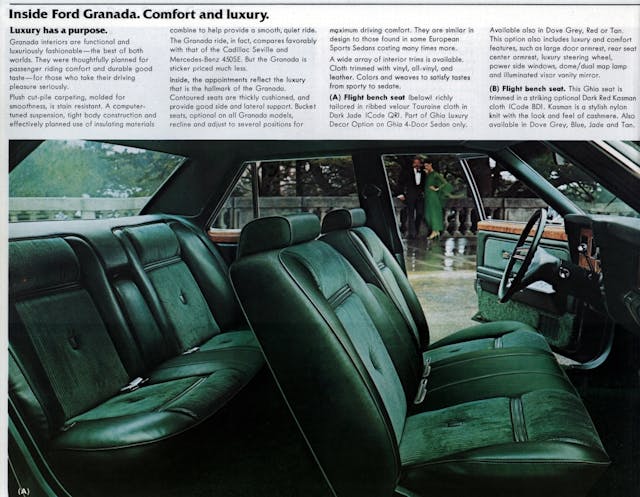
They sold very well, to the tune of some 300k in 1975. Even the plain-Jane Granada was not exactly a cheapskate special, with full wheel covers and at least a modicum of brightwork. For the true penny-pinchers, the aging Maverick was kept in the line, despite the fact that the Granada was originally meant to replace it.
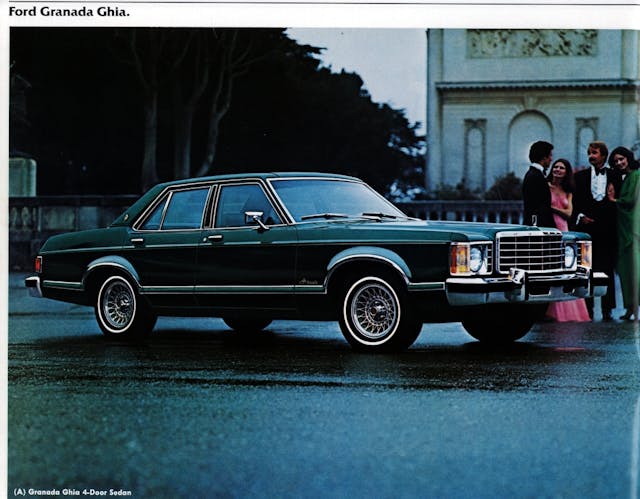
Granadas are generally panned, much like its showroom mate, the Mustang II. But like the MII (or Grand Poobah Pinto, if you prefer), the car was popular. People liked it, people reached for their wallets and signed on the dotted line for them, and people enjoyed them. It was a solid family car for people who didn’t want or need a brontosaurus LTD, but did want all the gadgets, gizmos, and comfort options.

At the top of the Granada heap was the Ghia, available as a two-door coupe or four-door sedan. Special features included extra chrome trim, wide side moldings with a vinyl rub strip, plusher interior, and other Broughamtastic trim bits.

By 1977, color-keyed wheel covers were also in the mix, and even aluminum wheels were available–for extra, of course. By the way, I do miss color-keyed wheel covers, but man, it must have been a royal pain to get a new one when one was lost–probably a frequent occurrence with the soft suspension (for the comfy ride, dontcha know!) these cars had.

And now, a digression, if you please. A lot is made of how cars like this didn’t handle, weren’t fast, etc. Here’s a fun fact: Some folks didn’t care about being Mario Andretti (in their own minds, at least) and didn’t have any interest in driving like a speed-crazed wildman. So, a car like this, for the accountants in Omaha, for the housewives in Olathe, and for the Montgomery Ward clerks in Des Moines, was a perfectly acceptable automobile. Not everybody wanted a BMW–and never mind they cost three times as much. Different car, different market, different target audience.
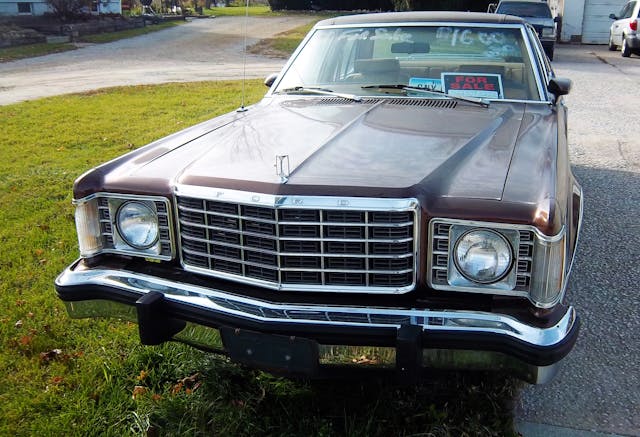 Thomas Klockauundefinedundefined
Thomas KlockauundefinedundefinedPerhaps the real reason folks today love to mock the Ford Granada is because of the rather silly ads that compared the Granada to a Mercedes-Benz. Sure. It looked just like a Mercedes–if you had consumed several alcoholic beverages, perhaps. I wonder how many martinis were downed at lunch in Grosse Pointe for that campaign to look like a good idea? “Sure Bill, whaddaya shay? Let’sh compare the Granada to a Mercedeesh! They’re all taxicabs in Yurp anywaysh!” “Shounds good to me, Sham!”
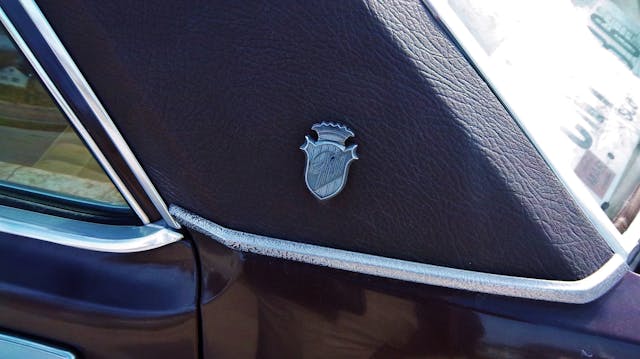
Despite all that, and my liking these cars—especially in fully-loaded Ghia trim—that is not to say that these cars did not have common Emissions Era troubles. Indifferent assembly, early-and frequent-rust, and the like were all present and accounted for. But at least you could enjoy a comfortable ride and quiet before the car began to disintegrate.

In 1977 Granadas, a 200 CID Six paired with a four-speed manual overdrive transmission was standard equipment–even on the flossy Ghias. But even the plainest Granada got front discs, steel-belted radial tires, inside hood release, chrome grille, hood ornament, full wheel covers, and cut-pile carpeting. That might not sound like much to our younger readers, but in the mid-Seventies, it was a step up from a base Maverick, with rubber floor coverings and dog-dish hubcaps.
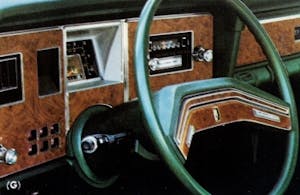
Inside, the interior was rather Lincoln-like, with more woodgrain than you could shake a stick at. Our featured root beer brown Ghia sedan even has the optional front bucket seats with console and floor-mounted SelectShift automatic transmission.
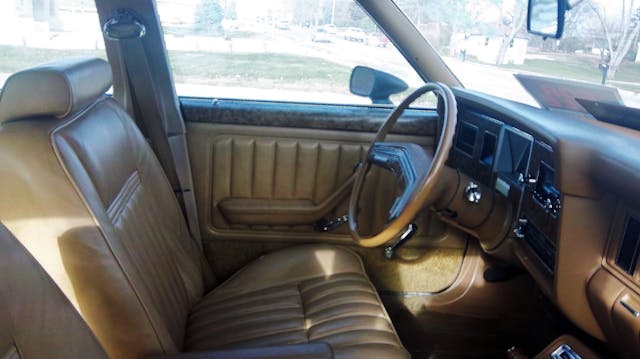
Those looking for more than a speedometer and gas gauge would have to look elsewhere, however–there wasn’t even a temperature gauge–just a row of idiot lights to the left of the steering wheel.
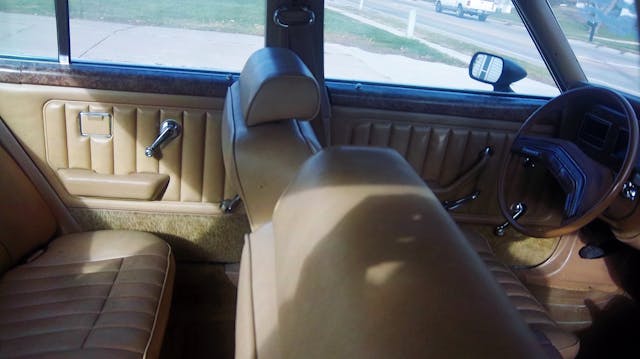
Inside, however, it was very much a more right-sized LTD. Still plenty of room–this was no Pinto, for heaven’s sake–and Ghia models also added nicer upholstery in either cloth or the vinyl shown here, and faux wood door caps. Remember, in the ’70s, faux wood was king–in Detroit, Dearborn and Kenosha, anyway.
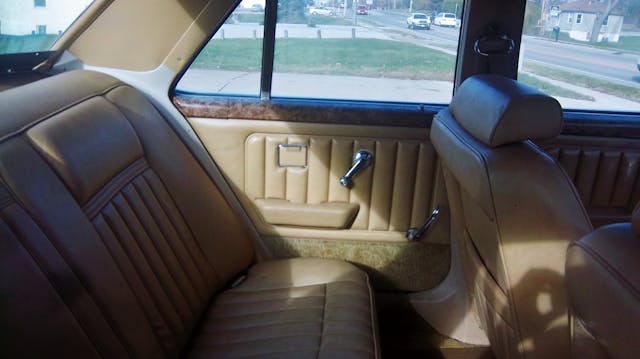
Ford really made hay with the “Chamois” interiors these cars were available with–another nod to a similar interior color available on Mercedes-Benzes at the time.

And while only Mr. Magoo would mistake this for a 240D, the car did benefit from a Mercedes-like upright greenhouse and three-box design. Plenty of headroom and legroom, considering this was a compact car at the time. You probably had more room in this back seat than a contemporary Continental Mark IV.

I first spotted this rare survivor in November of 2014. I was on my way home from Iowa City when I saw something Granada-shaped appear out of the darkness. A for sale sign suggested it wasn’t going anywhere for a while, so I planned my return right then and there.
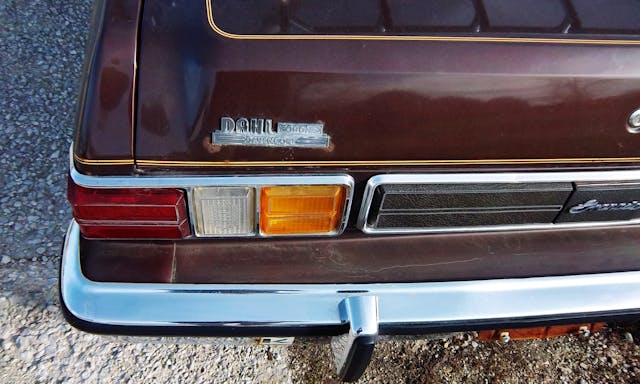
So a week later, I returned to Davenport for pictures. In the daylight, the rich root-beer brown paint appeared to be original, as did the chamois pin striping. And still a local car, after all these years! Dahl Ford is still in business on Kimberly Road in Davenport. I worked there during the spring and summer of 2011 and the owner, KV, is a friend and fellow car nut. As a bonus, this fine example sported the oh-so-trendy-at-the-time luggage rack! I never, ever saw one of these actually being used. It really was just more chrome ornamentation by and large.
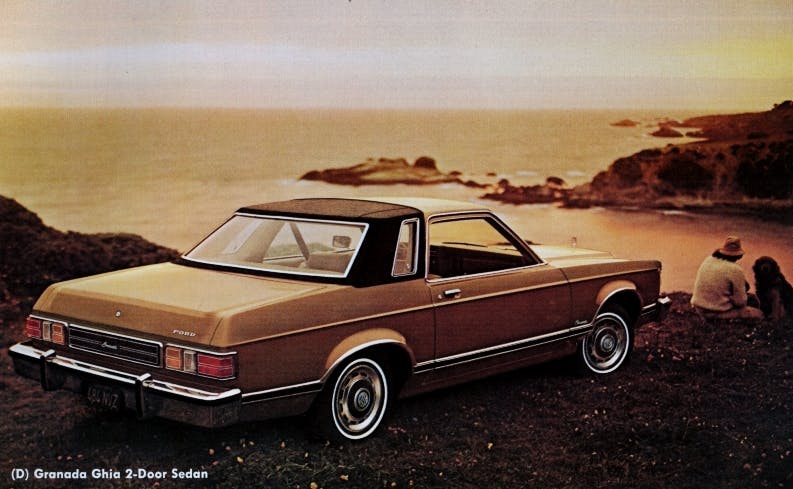
The huge doors of the coupe and tiny opera windows just didn’t look quite as good to me, though they have their appeal too, especially when fully loaded.

Here’s the bad side: Missing trim, missing Granada script on the front fender, and a missing wheel cover replaced with one from a 1980-82 Mercury Cougar. Scuff marks suggest all this happened when either the owner scraped into something, or something scraped into it. Perhaps that is why the car is being sold. Perhaps Aunt Mildred had a bit of a mishap in traffic?
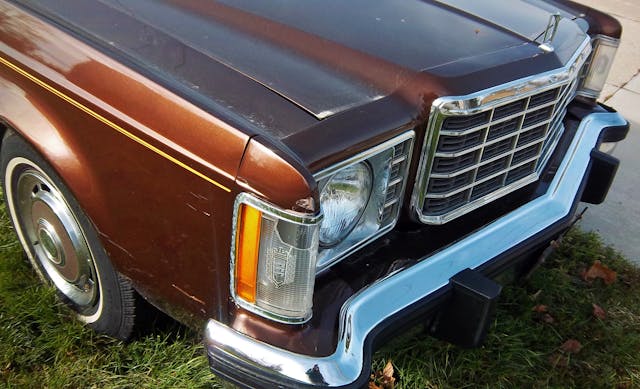
What price Ghia? $1600 was the asking price, and if it is a running, driving car that is pretty cheap, but given the nonexistent demand for these cars, I imagine it could be had for less–especially if you fanned ten $100 bills out on the hood. Would you buy it? Is there any love in 2021 for a poor old Granada?
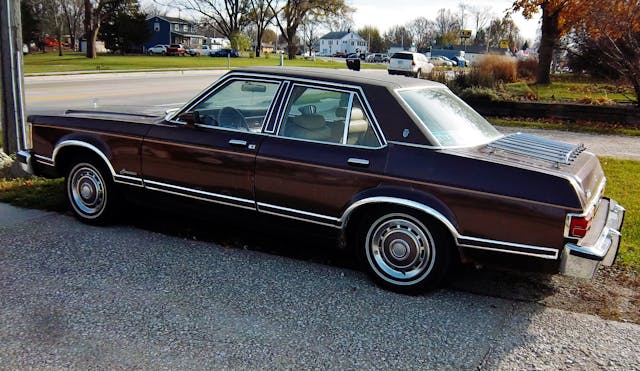
It is likely that someone bought it for cheap wheels and drove it into the ground. Rather sad for a car that has survived for so long in largely original shape, but let’s face it: Not everyone is into mid-’70s luxury compacts, so who knows what happened to this survivor? All I know is I haven’t seen it since…
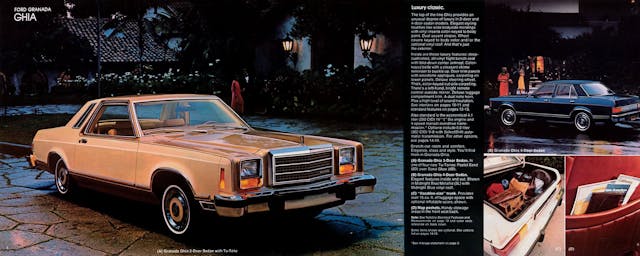
As for the Granada itself, it lasted all the way through the 1980 model year, gaining a facelift in 1978 that included rectangular headlamps. After 1981, the nameplate would move to the Fox chassis as a mildly restyled, more luxurious Fairmont, but it only made it through 1982 before getting yet another facelift and becoming the 1983-86 Fox Ford LTD.

But a few survivors, like this one, are still out there, proving that once a deluxe compact was sold by Ford Motor Company, and was popular. I have only one question: What in the world is that hood ornament supposed to be?!
